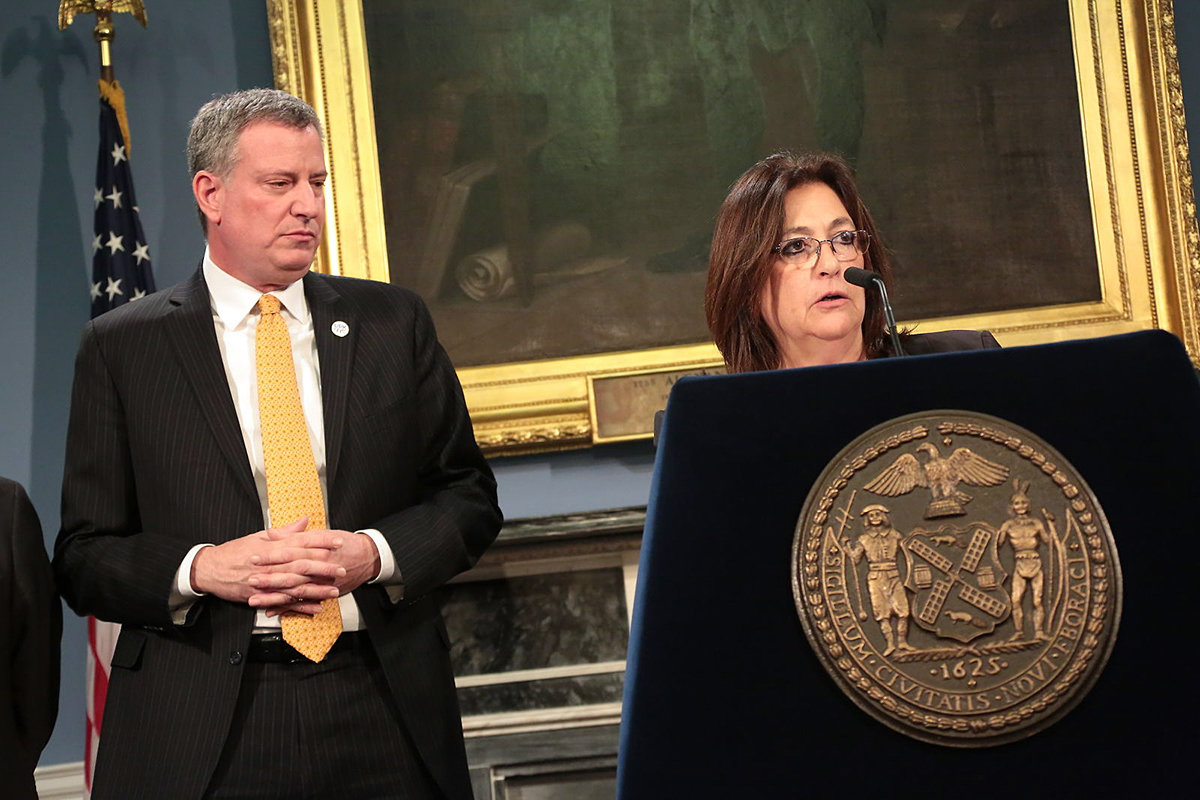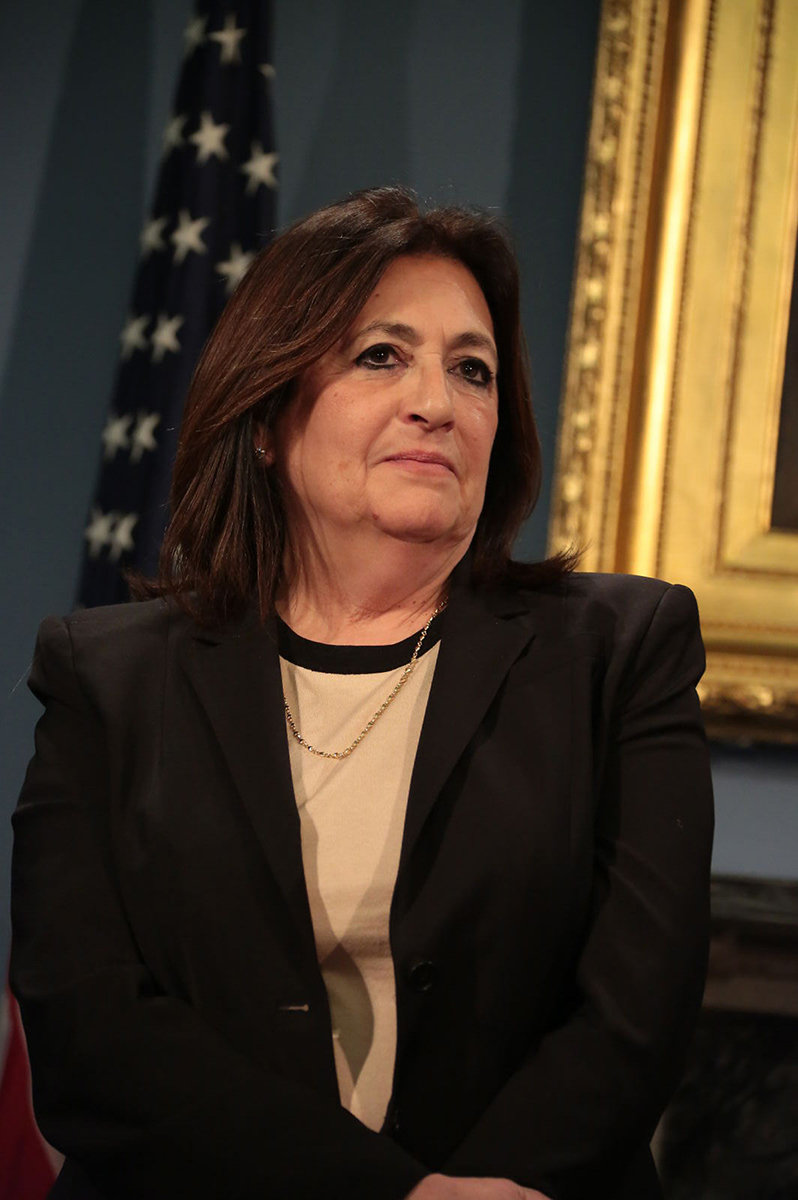SCA chief on overcrowding: We're doing the best we can
They’ve heard what he had to say, and they’re already at work making schools better.
The city’s School Construction Authority was the target of a new study commissioned by Bronx borough president Ruben Diaz Jr., which outlined 10 specific steps he believes will correct overcrowding at more than 650 city schools.
The problem, according to the construction authority? Diaz never came to them for input, and authority chief Lorraine Grillo has some serious issues with what the borough president concluded.
Of the more than 1,750 schools in the city, more than 38 percent of them are over capacity, according to Diaz. That’s because, more often than not, elementary and middle schools are zoned to include too many students — which the school must accommodate — leaving a rather big crowd for students to stand out in.
Diaz offered 10 recommendations including leasing more classroom space and using better models to predict future student populations at schools.
Yet, the authority already is working on those suggestions — even before they were made, according to an agency spokesman. The city has more than 200 “transportable units” — temporary trailers serving as classrooms — with plans to remove 35 percent of them. The agency always looks ahead five years, and maintains leases for more than 300 locations for classroom space.
“We do demographic studies every year,” Grillo said. “Projections are based on birthrates. We get information from city planning on rezoning. Other elements combined to put into our projections, which go out five years and 10 years.”
Yet those projections were a sticking point for not only Diaz, but also for P.S. 7 Milton Fein School principal Miosotis Ramos. Diaz called the authority’s current process for projecting the number of seats schools would need in the future as “antiquated,” and often incorrect, partially because communication between the construction authority and other city agencies involved in neighborhood development is poor.
“We have a system here that’s been in existence since the SCA took over the capital planning process,” Grillo said. “We have a system in place, we work with the DEP, department of buildings, housing. We have a very good relationship with everybody.”
Still, though, Ramos believes inaccurate projections can affect funding the school receives, even if the difference in the number of students seems small.
School funding is partially based on the number of students enrolled. More students means more money to provide programs, pay teachers, and keep the school running. If projections are off — in P.S. 7’s case, too small — the school may receive less money than they were anticipating.
“This year we were projected to have 690, the actual number is 50 less,” Ramos said. “It may mean a significant amount of money.”
As for leasing more space, the construction authority works closely with community boards and local organizations, Grillo said, to identify potential new sites for schools in overcrowded districts.
“If we can’t find adequate space to build ground-up, we often work with developers,” she said. “If we see a new building going up, or we know there’s a rezoning, city planning puts us at the table to see whether that developer can help us.”
For example, P.S. 397 in Lower Manhattan occupies the first five floors of its 76-story Spruce Street structure. The construction authority worked alongside the building’s developer to negotiate space for the school.
Relieving overcrowding is complex, Grillo said, especially in areas like this part of the Bronx where buildings already allow little if any negative space in between, in an area that is densely populated. P.S. 7, which was operating more than 40 percent over capacity last January has found some temporary relief thanks to the expansion of nearby P.S. 207, which now teaches some of the older grades.
Over the past decade, P.S. 7 has had to find room for more than 220 kids in seven third-grade classes. But this academic year was the first time some second graders stayed at P.S. 207 for third grade, bringing the number of third grade classes at P.S. 7 down to three.
And the expansion will continue with P.S. 207, according to Ramos, which should allow the overcrowding at P.S. 7 to continually shrink.
While this specific approach has worked well for P.S. 7 and P.S. 207 in Kingsbridge, Grillo warns it may not be as effective alleviating overcrowding at other schools.
P.S. 7 and 207 happened to have a perfect balance — one overcrowded school and one school with room to expand. While it may be tempting to use this method with other overcrowded schools, Grillo said, it could just result in two overcrowded schools if there’s not enough room.
P.S. 7 wasn’t the only school operating over capacity last year. It had plenty of company with P.S. 24 on West 236th Street and P.S. 81 on Riverdale Avenue, running as high as 30 percent over capacity.
In fact, the construction authority’s capital plan calls for more than 570 new seats to be created across Riverdale, North Riverdale, Spuyten Duyvil and Fieldston by 2024. Yet, nearly 1,500 seats are still needed in Kingsbridge, Norwood and Bedford Park.
Diaz wants to see school expansion taken in new directions — literally.
“We should be reimagining what they look like. Maybe they should go vertical,” he said. “The funding is there. We have the innovation. We live in the most resourceful city on the planet. But I don’t think the will is there.”
Grillo said the construction authority is ready to keep tacking the issues facing New York’s public schools alongside Diaz.
“The borough president’s suggestions were all good,” Grillo said, “but for the most part, they’re all things we’re already doing.”
What the organization really needs, she added, is support from elected officials to people living in neighborhoods in need of new schools.
“Supporting us when we find a location for a school is very, very helpful,” Grillo said. “Believe it or not, there are people who don’t want schools built in their neighborhoods.”











